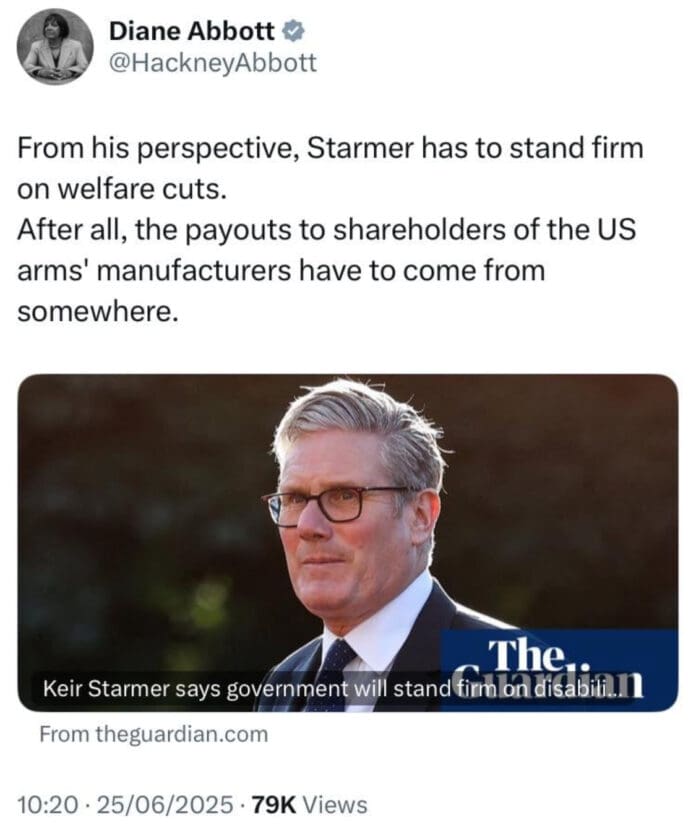As governments across Europe continue to tighten belts, cutting essential services under the banner of fiscal responsibility, one sector never seems to feel the pinch: the defence industry. In fact, defence spending is not merely protected—it is booming. Even amid waves of austerity, when public services are told there is no money, the wallets of European governments remain wide open for arms manufacturers.
Nowhere is this more evident than in the urgent push for a drone arms race.
The European Union’s defence commissioner, Andrius Kubilius, has warned that Europe must urgently prepare to build “millions” of drones to defend against a potential Russian assault. Military intelligence now suggests that Russian forces could be ready to strike a NATO country within the next five years. Kubilius argues that, in order to survive such a scenario, Europe must develop the capability to out-produce Russia in unmanned aerial systems.
“Russia can have around five million drones, so we need to have capacities bigger than those in order to prevail,” Kubilius said. He stressed that if President Putin ordered an attack, Europe would be facing a battle-hardened Russian army with the ability to deploy millions of drones—a terrifying prospect.
The 2022 invasion of Ukraine fundamentally reshaped modern warfare. Cheap, adaptable drones quickly became one of Ukraine’s most valuable assets against a much larger military power. Ukrainian officials now estimate that drones are responsible for up to 80% of Russian frontline losses. The battlefield has become so saturated with unmanned systems that entire zones, like Ukraine’s notorious “Death Valley,” are practically no-go areas for traditional armoured vehicles. “A tank in that zone survives six minutes,” Kubilius noted grimly.
Ukraine is expected to produce over four million drones this year alone. European leaders are beginning to do their own calculations. In Lithuania, Kubilius’s homeland, a country that shares a long border with Russia and Belarus, he estimates they would need to produce three million drones per year if war broke out.
Rather than stockpiling drones now, which could quickly become obsolete, the current strategy is to invest in industrial infrastructure: engineers, pilots, and rapid production capabilities that could be scaled up at a moment’s notice.
Europe’s response has been swift, but the scale remains staggeringly small compared to Ukraine’s output. German start-ups like STARK and Alpine Eagle are racing to develop loitering munitions and interceptor drones for Kyiv, but as Alpine Eagle’s CEO Jan-Hendrik Boelens bluntly put it: “We are absolutely not ready.” By comparison, Ukraine used around 1.3 million drones last year, while it’s estimated that Germany purchased perhaps a few hundred.
Boelens warns that NATO forces would quickly run out of drones in a real conflict. “If Ukraine consumes 3,000 drones a day, and we have 100 in stock, that wouldn’t last an hour.”
Despite the apparent lack of readiness, Europe’s military budgets continue to swell. At the latest NATO summit, members agreed to boost defence spending to 5% of GDP by 2035, with NATO chief Mark Rutte calling for a fivefold increase in air defences. The British government has pledged an extra £2 billion for drones during this Parliament, with a new defence strategy focused on a “20-40-40” model that heavily favours unmanned systems.
This escalating arms build-up is happening at a time when governments are relentlessly cutting essential public services. Austerity policies across Europe—especially in the UK—have devastated public infrastructure, underfunded the NHS, left schools scrambling for resources, and pushed local councils into bankruptcy. Yet when it comes to funding wars or preparing for them, the money appears instantly, unquestioningly available.
The justification is always framed as urgent necessity: the threat from Russia, the pace of technological advancement, the fear of being left behind. According to Defence Secretary John Healey, whoever delivers new military technology to their armed forces quickest “will win.”
Meanwhile, the defence industry is booming. In Berlin, the German military’s cyber innovation hub is overwhelmed by the number of companies pitching new weapons systems. “We are very advanced in the innovation process,” said Sven Weizenegger, who heads the hub. “But we are not good at getting these things into real frontline operations quickly enough. We need to fix that.”
To grease the wheels, the EU has approved a €150 billion (£125 billion) loan scheme to accelerate defence production across the bloc. Germany is pouring money into its army, with the Chancellor promising to build “the strongest conventional army in Europe.”
The result is an unmistakable pattern: investment in war is limitless, but investment in public welfare is treated as an unaffordable luxury.
The UK’s post-austerity landscape remains riddled with potholes—both literal and metaphorical. Local authorities are collapsing under financial strain, food banks have become institutionalised, and millions face daily hardship amid the cost-of-living crisis. The NHS waits for reform and support, but defence contractors never have to wait for contracts.
The government narrative insists that these defence measures are essential for security. But the question must be asked: security for whom? When arms manufacturers are prioritised over hospitals, schools, and social care, what does that say about who the state is really protecting?
Europe may indeed need to prepare for the next evolution of warfare. But it cannot be ignored that the defence industry’s grip on government budgets continues to tighten, even as vital public services are starved.
In a world where resources are finite, every pound spent on drones is a pound not spent on childcare, housing, or healthcare. The public is always told to brace for cuts, but when the military-industrial complex comes calling, the money always materialises.







